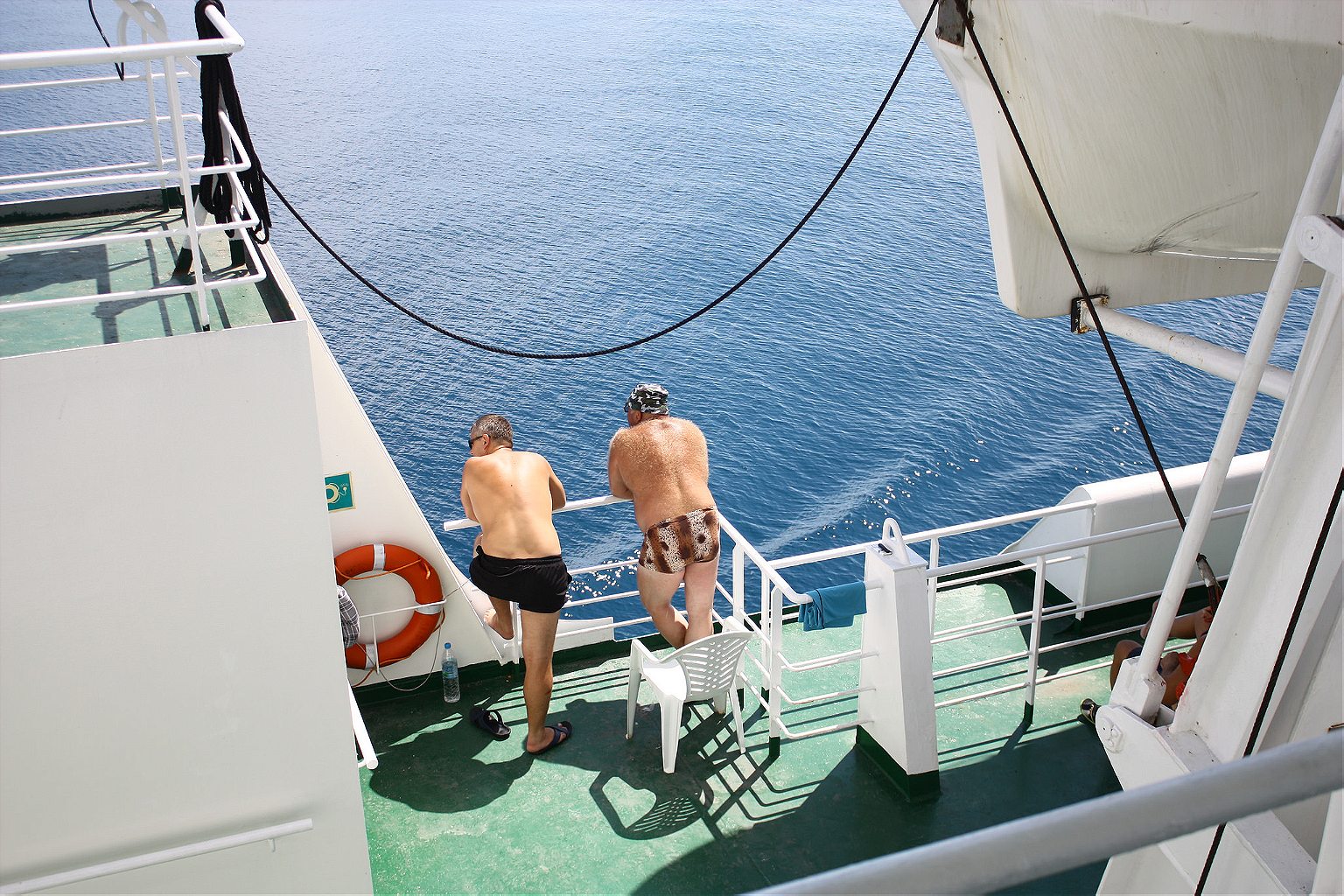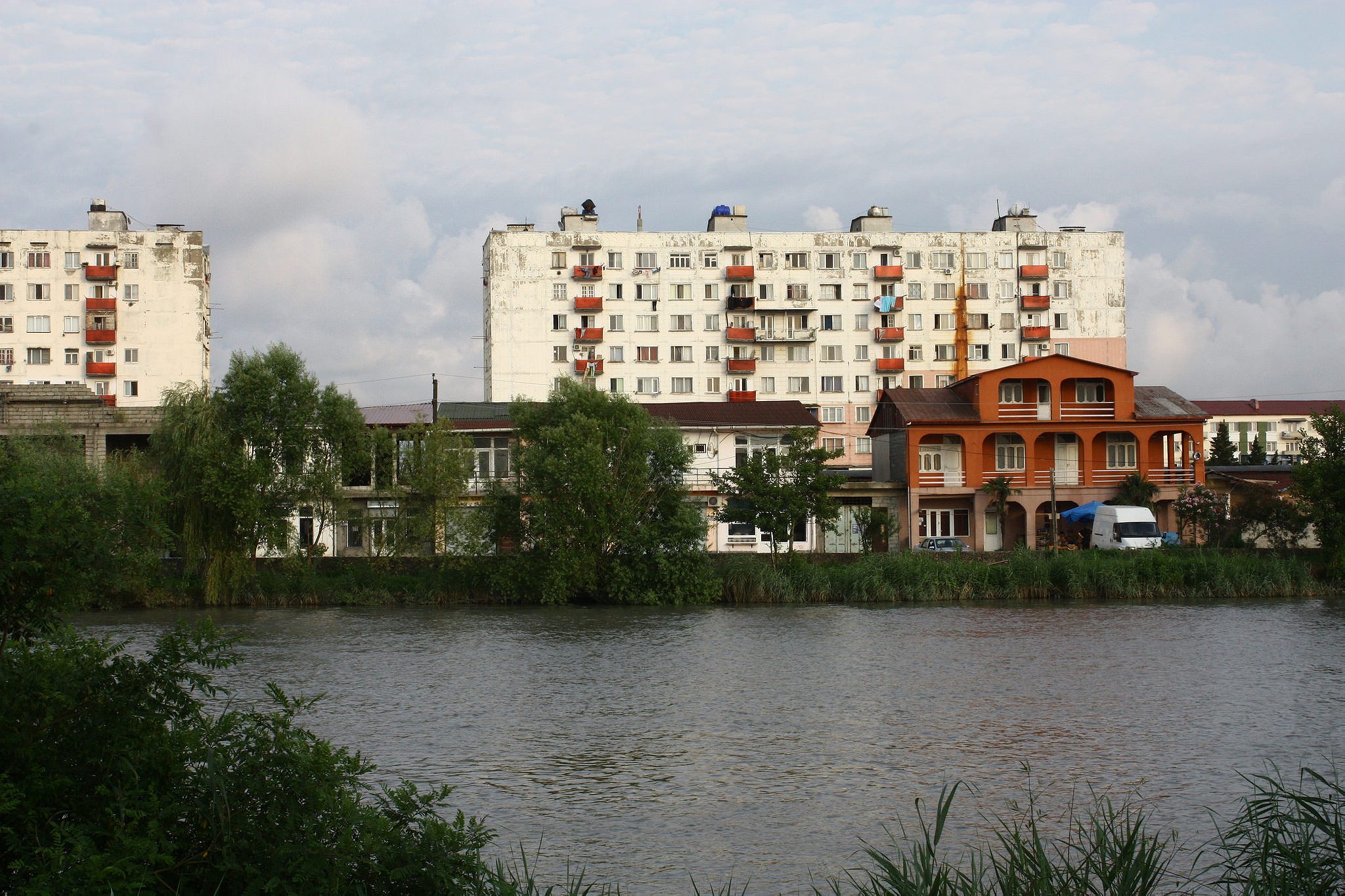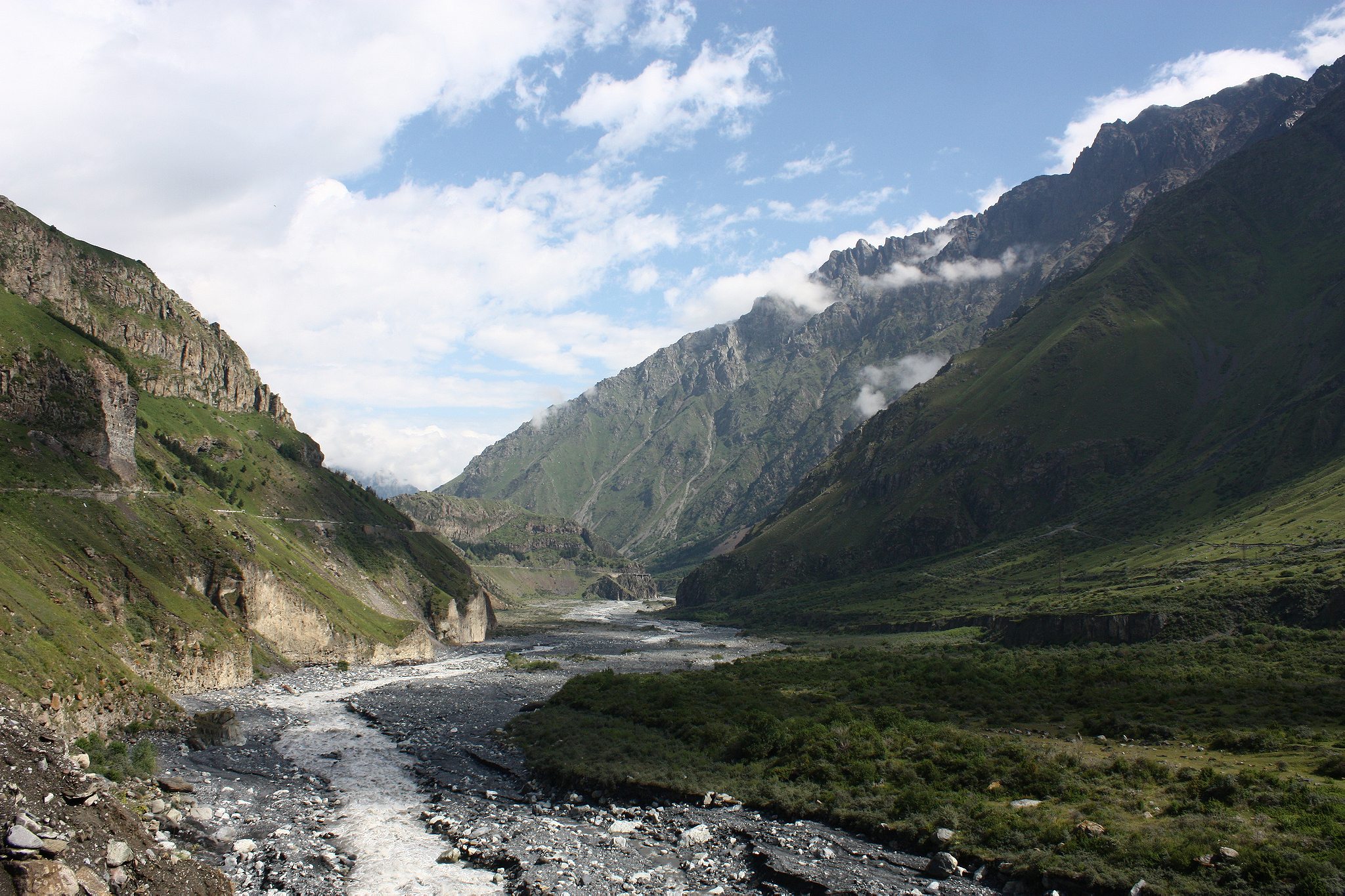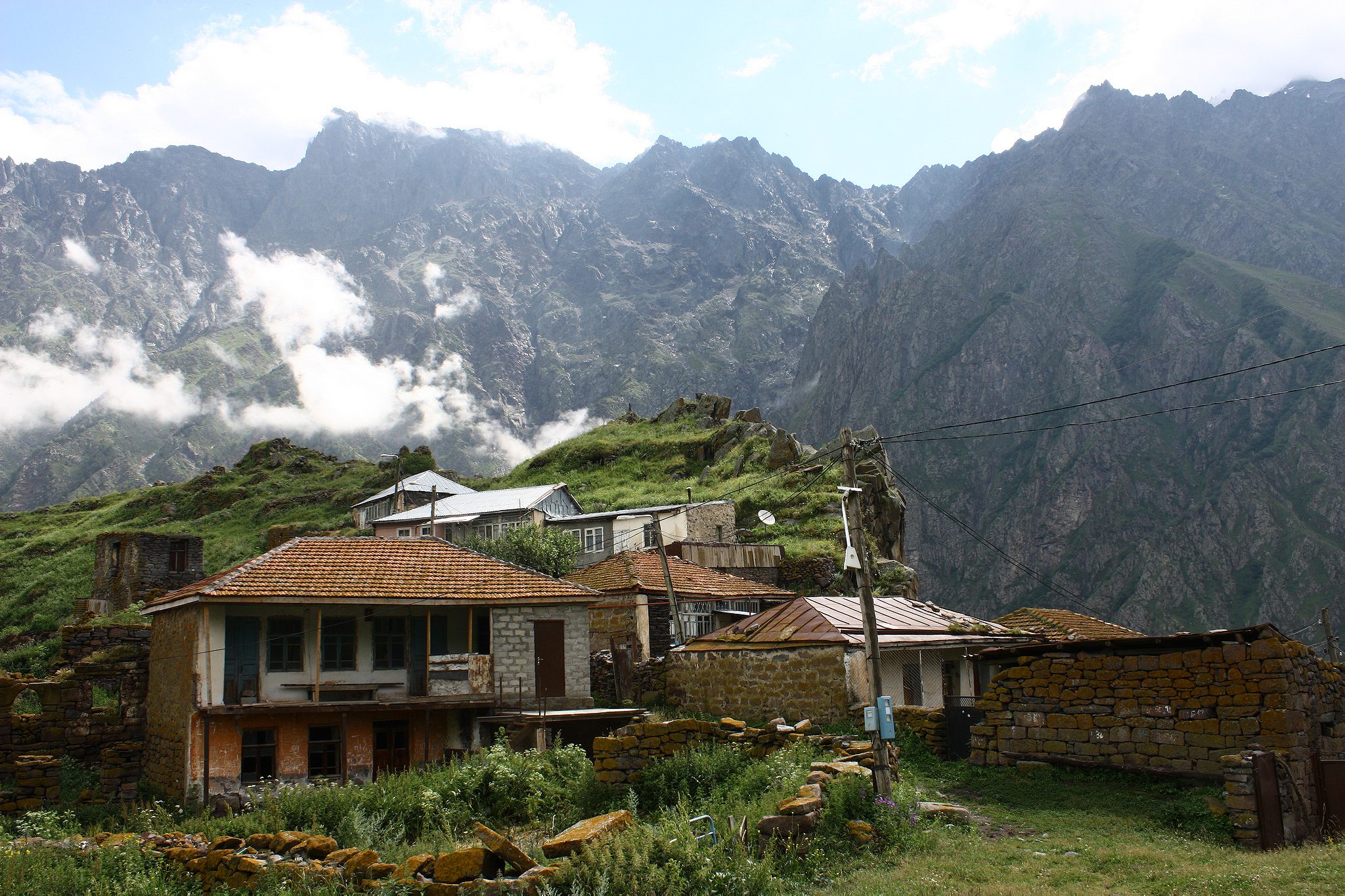Georgia insists that it’s in Europe. What does that really mean?
For Roads & Kingdoms‘ Edge of Europe series, writer Joshua Kucera is traveling along the disputed border between Europe and Asia, from Istanbul to the Russian Arctic, to explore the ancient history and current politics of how we divide up the world.
It’s not easy to find a ferry across the Black Sea these days. The volatile geopolitical situation around the Black Sea’s shores—an occupied Crimea, Russian conflicts with Georgia and Ukraine, on-again-off-again Russian-Turkish relations—complicates commerce and means that ferry routes are frequently changed or canceled.
But I’m trying to travel along the geographical border between Europe and Asia as closely as possible, and the Black Sea is part of it. The border stretches across the sea southwest to northeast, from the Bosphorus straits next to Istanbul to (opinions here vary) somewhere in Russia or Georgia on the eastern edge of the Black Sea. So after a good deal of hunting, I find a ferry from Burgas, Bulgaria—not far from Istanbul—to Batumi, Georgia.
The Black Sea has played a formative role in the creation of the idea of Europe. It was where the ancient Greeks first came into contact with the nomadic Scythians, out of which developed the Greek discourse of “civilization” vs. “barbarism,” argues Neal Ascherson in his brilliant Black Sea. “In this particular encounter began the idea of ‘Europe’ with all its arrogance, all its implications of superiority, all its assumptions of priority and antiquity, all its pretensions to a natural right to dominate,” he writes, “a ruthless mental dynasty which still holds invisible power over the Western mind.”
The trip took 3½ days, and my fellow passengers on the boat were a sort of latter-day group of nomads: mostly long-haul truck drivers from all over the Black Sea region, mainly Bulgaria, Georgia, Armenia, Azerbaijan, and Russia. They spent their days sunning their ample bellies on deck, watching Russian movies, or smoking and playing cards or chess in the bar. If any part of me wants to engage in that “ruthless mental dynasty,” my traveling companions belie the urge with their conspicuous lack of barbarism. One day I notice a small plastic container with a bit of water, a rock, and two tiny turtles sitting nearby. I ask the man sitting with them if they were his, and he explains that they are named Tati and Papi (“grandma” and “grandpa” in Armenian). He works with two other drivers in a team, and they take Tati and Papi everywhere with them. “They’re our friends,” he says.


After four days at sea we disembark at Batumi, and I head for the bus station, on the site—as a hammer-and-sickle monument commemorates—of a factory where a young Stalin worked before the Russian revolution. I hop in a marshrutka, as this region’s ubiquitous private minibuses are known, for the hourlong ride north to Poti and the Rioni River.
The narrow Rioni hardly seems suited to serve as an intercontinental boundary, flowing lazily along overgrown banks through Poti’s crumbling post-Soviet apartment blocks into the Black Sea. The Rioni’s humble presence, though, belies its much grander past: This was the site of the ancient kingdom of Colchis, best known as the place where Jason took the Golden Fleece and found a Colchian wife, Medea. Ancient historian Herodotus identified the Rioni, then known as the Phasis, as the border between Europe and Asia.
Herodotus’ was the minority view: Most of his contemporaries put the Europe-Asia border much farther north, where the Black Sea meets the Don River in today’s Russia. And Georgia, which considers itself the successor to Colchis, has generally been considered geographically part of Asia. To the British historian, statesman, and diplomat James Bryce, touring the Russian empire in 1876, Poti was a port through which “every traveller from the West is condemned to pass through, the most fever smitten den in Asia.”
During my visit this summer, Poti was indeed wet and muggy and seemed to be the kind of place that, in an era of poorer public health practices, would have been fever smitten. But don’t call it Asia. Government buildings here, as they do all over Georgia, fly the blue-with-yellow-stars flag of the European Union, even though Georgia is not in the EU and has little prospect of joining. This is often mocked as a pretension, in part unfairly. The flag is also that of the Council of Europe, to which Georgia does belong. These days, Georgia will take any connection to Europe it can get.

Georgia’s case that it belongs in Europe begins in Colchis. I tour the Poti Museum of Colchian Culture with Alexander Gvasalia, a local historian and former director of the museum. The collection of Colchian objects, including delicately carved iron axes and bronze carvings of pigeons, is world-class, but the conditions of the museum are so poor that Gvasalia has to use the light on his cell phone to point out details on the artifacts.
Afterward, in his office, Gvasalia tells me that the history of Colchis and its central role in Greek mythology “placed us in the European space.” And this grip on Europe was tightened when Georgia officially adopted Christianity in the fourth century. (It was only the second country in the world to do so, after Armenia.) That allowed Georgia to maintain a European identity even through subsequent centuries of Persian and Ottoman domination. “If you are Christian, you are European,” Gvasalia says.
I ask him about Herodotus’ claim that the Rioni was the border between Europe and Asia, which, if true, would place us and the museum in Asia, if only by a few hundred yards. “We’re not a border, we’re a European country,” he tells me.
Since the rise to power of pro-Western strongman Mikheil Saakashvili in 2004 this has become the only politically correct answer: Georgia is Europe. “We are not only old Europeans, we are the very first Europeans, and therefore Georgia holds [a] special place in European civilization,” Saakashvili said in his inauguration speech. Saakashvili is now gone, defeated in 2012 and exiled to Ukraine, but this legacy of his has endured, and now it is a consensus across partisan divides that Georgia is European.
Saakashvili left power in 2013, but his version of Georgia’s history in Europe has remained the consensus. In 2015, political scientists surveyed Georgian officials from across the political spectrum and found that they espoused a remarkably consistent narrative about Georgian history and its ties to Europe: that Georgia was part of the ancient Greek world and then medieval Christendom, both of which tied it to Europe’s history. In addition, according to this narrative, Georgian values have traditionally been the same as those of other Europeans, with an inherent love for freedom and individuality.
Georgia’s embrace of Europe, for all its romantic invocations of Colchis and medieval Christianity, has been used, above all, to buttress its foreign-policy agenda of integrating with European institutions—especially NATO—as protection against its overbearing neighbor and former ruler, Russia. And so in this version of history the Russian—and especially Soviet—domination represented an interruption of Georgia’s European heritage by “barbarians,” in Saakashvili’s words, who invaded Georgia “from the East” in the early 20th century and doomed the country to “seventy years of communism, slavery, and humiliation.” How could Georgia’s fellow Europeans not want to help this long-lost brother find its way back home?
But this strictly European identity has never quite fit Georgia, which is—to its credit—a one-of-a-kind place with its own alphabet, a language with no close relatives, and a unique cuisine far richer than you would expect of a country of fewer than five million. Under Saakashvili, the American ad firm Saatchi and Saatchi developed a new tourism slogan for Georgia, “Europe Started Here.” But the slogan was soon abandoned. “Nobody comes here to see Europe,” the head of Georgia’s state tourism agency has said. “If they want to go to Europe, they will go to Germany.” Georgia’s tourism materials now use an Istanbul-esque “East meets West” approach, and tourism is indeed booming. Tbilisi’s enchanting center—its Persian baths, medieval churches, and 21st-century starchitect projects—is now full of grubby backpackers, boutique hotels, and purveyors of wine tours.

And so, behind the official political consensus, a suspicion lingers that the rest of the world may not consider Georgia to be as European as Georgians do. In a park next to the Dry Bridge market, where tourists shop for Soviet memorabilia and Caucasian rugs, I meet Archil Gverdtsiteli, a retired military officer with a soldier’s steely gaze and a nerd’s interest in geography. In 2009, Gverdtsiteli was an active-duty officer taking part in a discussion at NATO headquarters in Brussels about expanding the alliance. The year before, the country had won an important diplomatic victory: NATO formally declared that Georgia “will become” an alliance member, albeit without specifying any timetable.
Now, though, Gverdtsiteli was hearing NATO countries’ officers argue that maybe further expansion wasn’t a good idea. “During discussions some were saying, we should stop expansion, maybe for 10 years or so,” he says. But Article 10 of NATO’s founding treaty, reaffirmed repeatedly since then, stipulated that “any other European State” is eligible to join, provided that they are able “to contribute to the security of the North Atlantic area.” And since the year before, alliance members had pledged that Georgia would someday be a NATO member, “that means they are counting Georgia as a European country.”
But geography is malleable. Gverdtsiteli, a lifelong map lover, was 15 and already a politics junkie in 1975 when the Western powers and the Soviet Union signed the landmark Helsinki Accords, which created the Organization for Security and Cooperation in Europe. “But I was confused,” he says: Why did this agreement about Europe include “Canada, the United States, and the Soviet Union all the way to Kamchatka?”
Georgia was in Europe, and now it’s in the Middle East
If Europe could expand so much, then it could shrink, too, and Gverdtsiteli wondered whether Georgia’s would-be NATO allies were “reconsidering their promise and were starting to look for some other reason” to exclude Georgia. “So if some country has changed its attitude to the Caucasus and Georgia, we have to find this in his internal maps, textbooks, political statements.”
So he undertook his own personal research project to determine if, in fact, other countries were excluding Georgia from their maps—mental and otherwise—of Europe. He was assigned to U.S. Central Command headquarters in Tampa, Florida, which allowed him access to more than 50 countries’ (NATO members and partners in CENTCOM operations) official maps and documents. He supplemented that with internet research, changing his IP address so he could see other countries’ search results. He’s monitored the way countries are classified on international websites like Yahoo, the BBC, and Couchsurfing.com, through which he has been hosting travelers in his home since retiring in 2011. And he has found that over the past five years, Georgia’s place in the world has shifted: “Georgia was in Europe, and now it’s in the Middle East,” Gverdtsiteli says ruefully.
Most geographical definitions of Europe do, in fact, exclude Georgia. A modified version of the border that Herodotus’ contemporaries agreed on—along the Tanais River, today’s Don—is still the most commonly accepted version of the Europe-Asia border, following the Don, Kuma, and Manych rivers from the Black Sea to the Caspian Sea. Other geographers put it along the ridge of the Caucasus Mountains, which separate Russia from Georgia—a particularly cruel irony, given that Georgia’s embrace of a European identity is focused largely on distinguishing itself from Russia.
In the 1950s, Soviet geographers undertook an effort to finally eliminate confusion about where the border between Europe and Asia lie, and as part of that they solicited opinions from the geographical societies of the three “Transcaucasus” republics: Armenia, Azerbaijan, and Georgia. The first two argued that they should be placed in Asia, with only the Georgian opinion dissenting, on “historical-cultural” grounds, that the southern border of the Soviet Union, separating it from Iran and Turkey, was the proper border with Asia. But Moscow disagreed: “That sort of radical decision would hardly be accepted by the scientific community either in the USSR, or outside its borders. In geographical, historical-ethnographic terms the Transcaucasus belongs to Asia,” wrote geographer Eduard Murzaev, summarizing the debate in a Soviet journal.
And so Georgians since then have preferred to demur on the question of where exactly the border of Europe lies. Even Georgian textbooks don’t argue that Georgia is geographically in Europe, instead offering varying definitions of “political” Europe, “geographical” Europe, and so on. “In Georgia, there’s no interest in discussing this,” Gverdtsiteli tells me.

The irony of Georgia’s European identity is that, when it first emerged in the 19th century, it was essentially a Russian import, and the Georgians who picked it up used it to justify closer ties with Russia. Tbilisi was the center of the Russian colonial administration in the Caucasus, and tsarist officials encouraged a sense of shared European identity in order to co-opt Georgians against the more rebellious Caucasian highlanders like Chechens and Dagestanis.
Mikhail Vorontsov, Russia’s first viceroy to the Caucasus in the mid-19th century, carried out a self-conscious “Europeanization” of Tbilisi, including the popularization of fashions from Paris, the establishment of opera and ballet theaters, and other elements of a “Western cultural veneer.” One Georgian contemporary credited Vorontsov for removing the “Asiatic rust” from the Georgian character. Ilia Chavchavadze, the leading intellectual of Georgia’s national revival, celebrated Russia’s conquest of Georgia as affording protection against the Muslim Persian and Ottoman empires and having “opened the doors of enlightenment” for Georgia.
European visitors to Tbilisi tended to see things this way, too. Robert Lyall, visiting Tbilisi in the 1820s, saw Russian colonization as a Europeanizing process:
This part of the town assumes an European aspect, but it still includes hundreds of Asiatic hovels, like terraces, in the sides of the hills, which being extremely low, flat-roofed, and mean, they are in many places scarcely visible until we are close upon them. … We were told that it is the design of General Yermolof to make Tiflis a completely European town, and to allow this suburb only to retain its Asiatic character. In the meantime it exhibits nothing but meanness and wretchedness.
Later Georgian intellectuals pushed back against this, arguing that Russia in fact prevented Georgia’s Europeanization, or that Georgia should identify with the East rather than with Europe. But all of this has been scrubbed from the official narrative, neatly encapsulated at the National Museum of Georgia, where the country’s history is reduced to three periods: the ancient, the medieval Christian, and the Soviet, which is labeled an “occupation.” There is nothing at all between the Middle Ages and 1917.

When I visited the museum this summer there was, however, a temporary art exhibit of works dedicated to “The Knight in the Panther Skin,” a 12th-century epic poem considered to be the foundational work of Georgian literature. Some of Georgia’s Westernizers have thought the poem, an allegory of Georgian history, which is set in Arabia and India, to be too “Asian.” Since I was working on this piece, I scrutinized the art, fanciful depictions of the warriors and creatures in the poem, for implicit or explicit signs of “Easternness” or “Westernness” but found none. It was just … Georgian.
Geopolitical exigencies are a shaky foundation on which to build a historical narrative. During the Cold War, a variety of pseudoscientific theories purported that Western Europe was fundamentally different from the East due to the legacy of Charlemagne, or of the schism between Catholicism and Orthodox Christianity, or of the Austro-Hungarian and Ottoman empires. And then the Soviet Union fell, the Warsaw Pact disbanded, and all of a sudden these formerly benighted peoples became such eager American allies that Donald Rumsfeld, with a nifty bit of rhetorical judo, inverted the stereotype and praised them as “New Europe.”
In Georgia’s case, the argument that they are “the first Europeans” falls apart on a cursory examination. Being in contact with the Greek world is not the same as being Greek; Herodotus wrote that “there can be no doubt that the Colchians are an Egyptian race … they are black-skinned and have woolly hair.” And similarly ancient homes of Christianity—the Levant, Iraq, Egypt, or Ethiopia—don’t fit the European image Georgia is trying to create for itself.
We want to be on Europe’s team
Politically, too, the idea that Georgia is following a “European” model of governance is hard to justify. Many have noted that the country’s neoliberal economic and tough-on-crime judicial reforms follow the American model more than the European. And Saakashvili, while extolling his country’s ancient European roots, also idolized Singapore’s Lee Kuan Yew, whose authoritarian modernization agenda is a more obvious inspiration than anything happening in Brussels or Berlin.
Ultimately, of course, whether or not Georgia is really European—whatever that means—doesn’t matter. What matters is that Georgia is essentially saying: “We want to be on Europe’s team.” Western, and especially American, policymakers are easily flattered by this sort of rhetoric and don’t care much about its historical accuracy. But it’s not going to really matter in the end. Turkey was accepted as a NATO member despite not being obviously European, and both it and Greece were far from democratic for their first several decades of membership. And Georgia’s failure thus far to secure NATO membership has nothing to do with how European it is and everything to do with the current members’ unease with bringing in a new member currently in conflict with Russia.
Joseph Salukvadze, the deputy rector of Tbilisi State University and a geography professor, tells me that as an academic he understands that the idea of a border between Europe and Asia is arbitrary. “Of course it is interesting to debate, but nothing else,” he tells me. “What is more important is self-identification, where we feel ourselves to be.” He teaches an undergraduate course on the geography of the Caucasus, and as part of it he has his students discuss whether or not Georgia belongs in Europe. The majority say it does, almost no one says it is Asian, and some say it is neither; the point, though, is to get them to define and question what they mean by Europe and Asia.
I tell him that my sympathies lie with the students who say “neither” and ask why the idea of dividing up the world into East and West (or Eurasia into Europe and Asia) is so persistent, in Georgia as it is everywhere else. And he acknowledges that his sympathies lie with Europe. “More indicators say that Georgia is more Asian than European,” he says. “But when someone tells us that we’re more Asian than Europe, we get upset. This is where Europe started!”
Salukvadze contrasted Georgia’s situation with other countries in comparable geopolitical straits. “The Moldovans have Romanians, and Ukrainians have Poles and other Slavic people,” he said. “We’re very proud that we’re so unique, but sometimes it’s a little sad that nobody cares about us because we’re not like anyone else.”
This reporting was made possible by a grant from the Pulitzer Center on Crisis Reporting.
